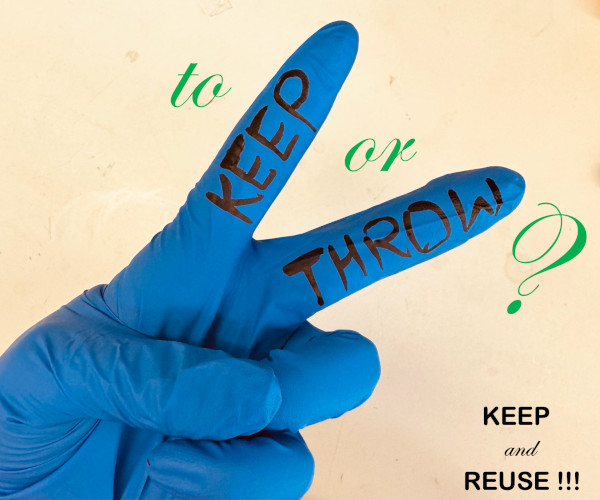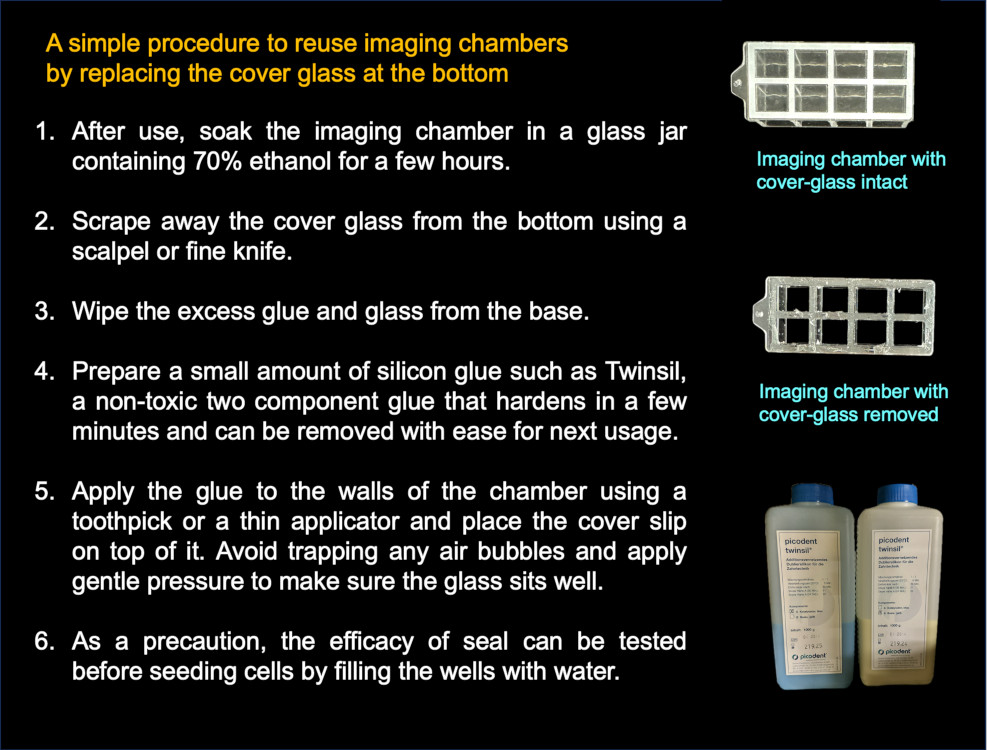Special Issue - Reducing the expense of life science research through resource-conscious methods
Newsletter
Maintaining sterile conditions and longterm preservation of samples are crucial in biological research. Traditionally, this requirement has led to the extensive use of single-use plastic consumables and maintenance of ambient temperature, resulting in significant financial and environmental costs. By adopting resourceconscious methods, researchers can substantially reduce these expenses while maintaining the integrity of their work.

Bionote
Pallavi was born and raised in Pithoragarh, Uttarakhand, India. She moved to the University of Delhi for her Bachelor's and then to the University of Hyderabad for her Master's and PhD. Since January 2023, she has been a postdoctoral researcher at the Max Perutz Labs, Vienna, Austria. Apart from biochemistry and microscopy, she is enthusiastic about the importance of sustainability and mindfulness in the research ecosystem. She is also a member of the Climate Group at her institute.
Regulating energy consumption
Laboratories consume massive amounts of electricity and require a high running cost. Since this expense is usually borne by the institute’s funding, researchers rarely see the numbers. Generally, most people are told to turn off the equipment when not in use. However, this rule cannot be applied to some of the equipment, such as ultra-low freezers.
Gradually switching to energy-efficient models is a possible solution. For the existing freezers, switching to -70°C instead of -80º can result in a considerable energy reduction without affecting the storage of biological samples. Amina Zankel, Head of Environment, Health and Safety at the Research Institutes of Molecular Pathology situated at the Vienna BioCenter, shares an example of this: "We saved up to 42% energy during the first year of switching 18 old devices and 3 new devices to -70°C.”
Reusing single-use plastics
Single-use plastics are prevalent in research laboratories due to their convenience in preventing cross-contamination between samples. Items like pipette tip boxes, 15/50ml tubes, and petri dishes are commonly used and discarded after a single use. However, reusing single-use plastic consumables multiple times before disposal is possible. During my PhD in India, I reused 50ml tubes several times by washing and autoclaving. Since not all single-use plastic can withstand the heat and pressure of an autoclave, we checked the material specifications and invested in a good quality material before purchasing. In the long run, the benefits of washing and reusing labware outweigh the cost (Farley and Nicolet, 2022).

Due to the lack of a timely supply of cover glass-bottom dishes for imaging cells during the COVID-19 lockdown, I had to find a way to reuse the existing dishes multiple times without compromising data quality or risking contamination. We quickly adopted a method where we washed the 35mm cover glass bottom dishes immediately after use and sterilized them with alcohol and UV light. This technique was reliable and effective (Deolal and Mishra, 2022). Similarly, 8-well imaging chambers with cover glass bottoms can also be reused. By simply replacing the old cover glass with a new one while retaining the plastic chamber body, we can extend the life of our supplies (Bodner et al., 2023). Plasma cleaning can be used to sterilize the surface of delicate material such as cover glass. Clara Bodner, a researcher and former staff member at an imaging facility, suggests that with a little planning, several labs can share the cost, making expensive equipment like a plasma cleaner more affordable per head.
Challenges and considerations
Despite the success of these and similar approaches, researchers often overlook resource-conscious practices. This mindset disparity is notable between researchers at institutes with abundant funding and those with limited resources. Even if any resourceconscious approach is practiced in the course of a study, it often does not make it to a final published version of a research article. This is something that authors and editors of scientific journals can consider promoting.
Recognizing individual efforts through small rewards as well as providing dedicated time and resources for proactive, self-driven grassroot groups can make a significant difference (Dobbelaere, et al., 2022). Nikola Winter, Technical Management staff and member of the Climate Group at the Max Perutz Labs, emphasizes the importance of institutional support. "Self-motivation can only get you so far. To set an example, the institute's framework and leaders' participation make the execution effective," she says.
My thoughts also resonate with Nikola, Clara and Amina that discussing effective resource utilization in monthly or annual meetings is essential and ensures transparency and accountability among stakeholders. A wellfunded ecosystem can indeed enable institutes and labs to invest in more energy-efficient and cost-effective resources. Institutionalizing some of the practices and encouraging innovation will eventually benefit both the scientific community and the planet.
Pallavi Deolal
VIP2 Fellow
Vienna BioCenter
deolalp26@univie.ac.at
@PallaviDeolal

References
Farley, M., & Nicolet, B. P. (2022). Re-use of labware reduces CO2 equivalent footprint and running costs in laboratories. bioRxiv (Cold Spring Harbor Laboratory).
Deolal, P., & Mishra, K. (2022). An adaptable live-cell imaging protocol to analyze organelle morphology in Saccharomyces cerevisiae. STAR Protocols, 3(1), 101124.
Bodner, C., Kiesenhofer, D., Schütz, G. J., & Brameshuber, M. (2023). Monte Carlo simulations for the evaluation of oligomerization data in TOCCSL experiments. Biophysical Journal, 122(11), 2367–2380.
Dobbelaere, Heidelberger & Borgermann (2022). Achieving sustainable transformation in science – green grassroots groups need nurturing from the top. Journal of Cell Science.